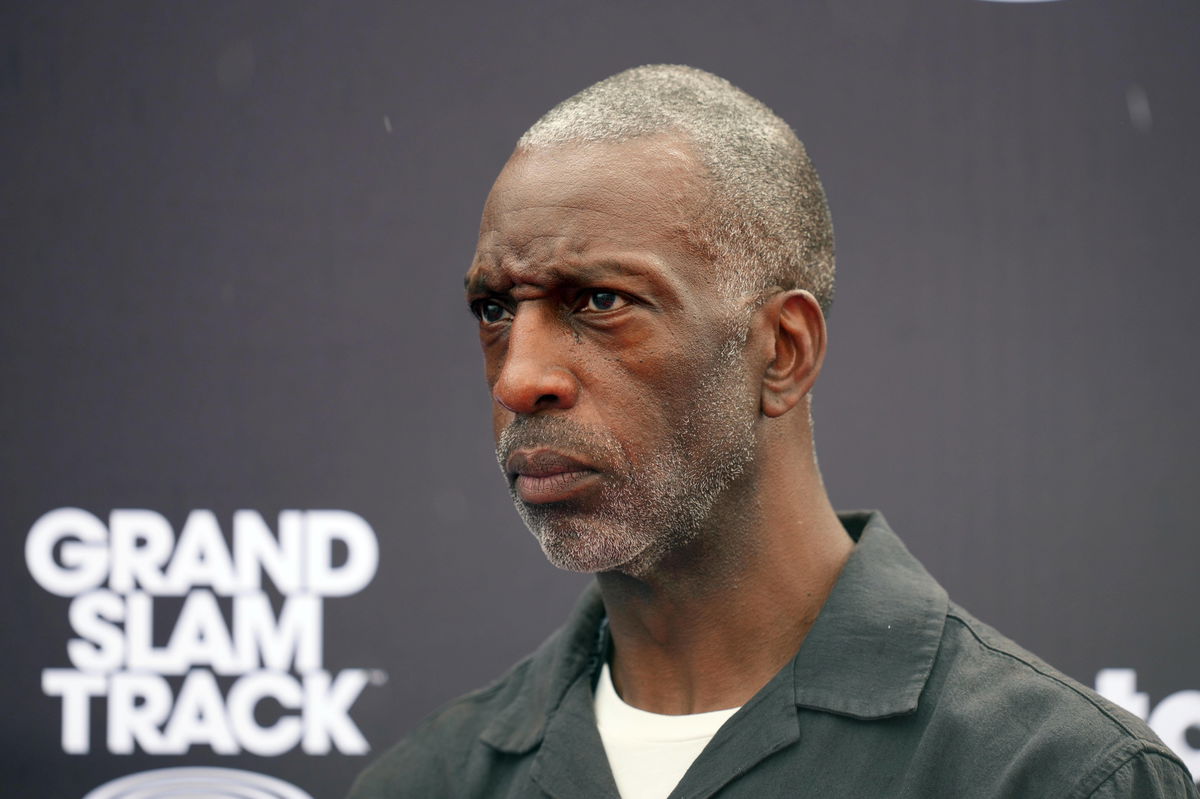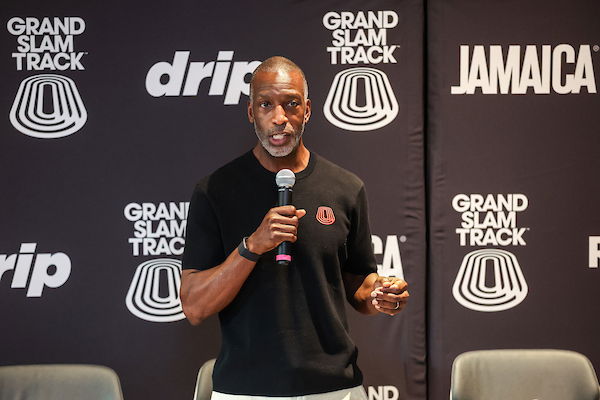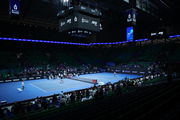
Imago
Track & Field: Grand Slam Track Miami May 4, 2025 Miramar, FL, USA Michael Johnson reacts during the Grand Slam Track Miami at Ansin Sports Complex. Miramar Ansin Sports Complex Florida United States, EDITORIAL USE ONLY PUBLICATIONxINxGERxSUIxAUTxONLY Copyright: xKirbyxLeex 20250504_hlf_al2_126

Imago
Track & Field: Grand Slam Track Miami May 4, 2025 Miramar, FL, USA Michael Johnson reacts during the Grand Slam Track Miami at Ansin Sports Complex. Miramar Ansin Sports Complex Florida United States, EDITORIAL USE ONLY PUBLICATIONxINxGERxSUIxAUTxONLY Copyright: xKirbyxLeex 20250504_hlf_al2_126
The silence was deafening. Then came the hammer. Michael Johnson’s Grand Slam Track (GST) collapsed just weeks before its final showpiece in Los Angeles, and fans were left wondering. What went wrong? But now, the sprinting icon has finally stepped forward. And instead of retreating, he’s charging ahead. With an even sharper vision, focused solely on one thing. Track. Nothing else.
Watch What’s Trending Now!
That conviction became unmistakably clear in his first public comments after the cancellation. But Johnson didn’t sound like a man mourning a missed opportunity. Instead, he spoke like someone who’d already cracked the code. He believes track and field, by itself, is tailor-made for this era of fast content and short attention spans. “Two-thirds of our races take place in under one minute,” Johnson emphasized, explaining why the GST format-brief, thrilling, self-contained races were working. “We can tell the story in a couple of minutes… set it up, run the race, celebrate it, three minutes,” said Johnson. Despite the abrupt end to GST’s inaugural season, Johnson’s numbers tell a story of validation.
Three meets. Surging engagement. “In the U.S., 48 percent of our viewership is women… 44 percent Black, 12 percent Latina,” he revealed. “Sixty percent under the age of 35,” Johnson further added. And for Johnson, that isn’t just an audience. It’s proof of concept. It’s the kind of reach mainstream American sports fight for. And track, in his eyes, just proved it could win.
ADVERTISEMENT
That’s why Johnson isn’t talking about basketball or any crossover gimmicks. He’s not looking to pair track with concerts or festivals. He’s not trying to mimic other sports. Rather, MJ wants to rebuild the track’s ecosystem. With track solely at the center. “It’s just a very unique sport,” Johnson said flatly, calling it a rare gateway into “hard-to-reach markets” through athletes whose stories are “very diverse and very compelling.” No tricks. No distractions. Just races.
🚨 Why Now? Why Track? Why Grand Slam is Built for This Generation. 🚨
From 60-second races to a fanbase that’s 60% under 35, Grand Slam Track isn’t just another league.
Hear from @MJGold at Cannes Lions talk about this fast-paced, diverse, and wildly engaging sport is… pic.twitter.com/O4vqSvFHlQ
— Grand Slam Track (@GrandSlamTrack) June 18, 2025
He’s using it. Refocusing. Resetting. And from the sound of it, readying GST 2.0. “What we’re seeing with Grand Slam Track is our content on social—the engagement level is extremely high,” he stressed, leaning on the one area where GST did break through. Digital. New investors are reportedly lined up. A revamped calendar is coming. And Michael Johnson is still all-in. On track and nothing but track. He’s seen the future, and it runs in under 60 seconds.
ADVERTISEMENT
Still, it’s impossible to ignore where GST struggled. Most painfully, with attendance and broadcast visibility. Sparse stadiums and lack of a major network deal haunted the promising start. The LA finale was supposed to be the redemption arc. Instead, it vanished.
ADVERTISEMENT
Empty seats and silent screens, Grand Slam Track’s struggles off the Track
When the lights dimmed in Kingston’s National Stadium, it wasn’t because the show was over. It was because the seats were. Despite the hype, Grand Slam Track’s big debut fell flat where it mattered most: in the stands and on TV screens. The event, bolstered by stars like Sydney McLaughlin-Levrone and thrilling matchups on the track, simply couldn’t fill the void left by its underwhelming crowd presence. “Worryingly empty” was how London’s Thom Gibbs put it, a phrase echoed by the visual reality of a 35,000-seat venue never reaching even half capacity across all three days.

ADVERTISEMENT
Though the racing was praised as “good” and the matchups electric, the overall optics told another story. LETS RUN’s Jonathan Gault didn’t sugarcoat the situation. As he added, “There is no way to spin all of those empty seats as a success.” While fans who did show created “a good atmosphere,” the empty grandstands, and almost deserted turns and back straight painted a stark picture. Organizers even resorted to offering free admission to the bleachers just to generate buzz, a reactive move that failed to mask what critics online were quick to highlight as a glaring attendance issue.
Top Stories
Greg Biffle Plane Tragedy: What Might Have Caused the Crash That Killed the NASCAR Champ and His Family

Seahawks’ Ernest Jones IV Accuses Rams of Inappropriate Comments After Puka Nacua’s Feud With Nick Emmanwori

Patrick Mahomes’ Chiefs Extremely Close to Leaving Arrowhead Amid Kansas State’s Announcement, Per Report

Another PGA Tour Analyst to Leave Golf Channel Days After Cara Banks’ Unexpected Exit – Report

Ex-UFC Fighter, Former Wrestling Champion Dies at 63 After Health Complications

Match-Fixing Scandal Erupts in Tennis After Arrests Uncover $821K Scheme

If the quiet stadiums weren’t troubling enough, the broadcast numbers underscored the problem. SportsMediaWatch.com pegged viewership around 246,000 on both Saturday and Sunday, numbers closer to NCAA coverage than a global pro league launch. Even Michael Johnson admitted, “We’ll look at things that we might change or things that we need to adjust.” The question now is whether bold ideas and big names can overcome empty seats and quiet screens, or if the Grand Slam Track will stumble where it hoped to sprint.
ADVERTISEMENT
ADVERTISEMENT
ADVERTISEMENT
ADVERTISEMENT

